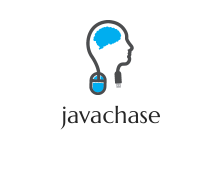Depending on who you ask, you may get a different answer to what the best way to backup a computer is. In today’s post, we will list various backup options for safeguarding and backup, which can be used as a Plan B.
1. External Hard Drive
External hard drives are probably the most popular method for backing up data on a PC because they are for the most part straightforward and simple to setup. With an external hard drive as a backup solution, the hard drive is connected to a computer directly via USB, FireWire or eSATA.Many external hard drive manufacturers provide backup software with their drives, which can be used as an out-of-the-box solution for backing up a computer. However, specialty backup software is readily available as well.
2. USB Drive
If you don’t have a ton of data that you need to backup (less than 128GB), then a simple USB drive backup solution may work great for you. USB drives are for the most part used to move data from one PC to another, or to another device, but high capacity USB drives are becoming more popular as backup devices.Companies like Lexar and SanDisk are marketing their high-capacity USB drives as minimal, but effective backup solutions. For additional backup capacity, some manufacturers offer up to 128GB USB drives which are specifically purposed for backup, including ready to go backup software preinstalled onto the drive.
Additionally, some USB drives even incorporate a physical one-touch button on the actual drive that works with the manufacturer’s backup software. Simply tap the button on the USB drive, and your data is backed up.
3. Backup Internal Hard Drive
If the objective is to backup a single computer, you may want to consider adding an additional internal hard drive to the computer. Since the hard drive will be connected directly to the motherboard (usually through a SATA interface), it may offer additional speed vs. an external hard drive, which would likely be connected via USB.Want to backup a desktop computer and have a spare hard drive laying around? Install it on the PC in the same way the primary hard drive is connected. You may have to buy an extra SATA cable to connect the drive, but they’re only a few bucks. From there, select a backup software, choose the extra internal hard drive as the backup source, and you’re set to go.
4. Cloud
Many people use cloud storage as a way to backup important files and data on their computers. Usually, cloud storage is not used for full system backups, but rather, a backup storage location for important data.With cloud storage for backup, you can create a new folder/location using your cloud provider of choice and title it “backup.” From there, copy any important files or data to the cloud as well as the computer. Want to backup data to the cloud but safeguard it? You may consider encrypting the data.
Online-Tech-Tips has a nice guide to different cloud providers and the pros and cons of each.
5. Network Attached Storage (NAS)
Network attached storage, or NAS, is a nice backup option if you have multiple computers or devices that you want to backup to a centralized location. Most basic NAS storage options involve connecting an external hard drive or specialty backup device such as a Drobo or Synology solution to the network or router.6. CD/DVD/Blu-ray
Although you may not want to be burning a ton of discs for regular backups, CD/DVD burning is still a popular method for creating incremental and periodical backups. This method is not only cheap, but somewhat reliable as well. Because you are backing up specific data or even performing complete system backups to removable media, you can create a defined data backup and store the CDs/DVDs in a safe spot.Unlike a hard drive that is electronic and uses mechanical parts, which can fail at any given time, a CD sitting in a shoe box is very unlikely to fail, making CD/DVD backup a cheap and reliable option.
For a little bit of extra money, you can also get yourself a Blu-ray burner and some high-capacity Blu-ray discs that can store significantly more than CDs and DVDs.
7. Tape Drive
If you have very important data that needs to be backed up and possibly even archived for a period of time, a tape drive solution may be the best backup option.Tape drives utilize reels to wind a magnetic strip. Thus, they offer sequential access storage, where a device like a standard HDD hard drive utilizes random access storage. Tape drives are not the latest technology, but they can be quality choices for archive or durational backup and they are very reliable with excellent data preservation qualities.
However, they are unpractical for most consumer backup tasks and general storage purposes. Tape drives are also usually more expensive and come with more expensive commercial backup software.

No comments:
Post a Comment